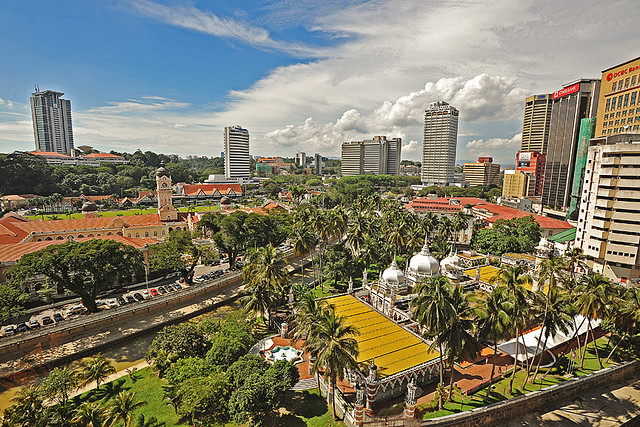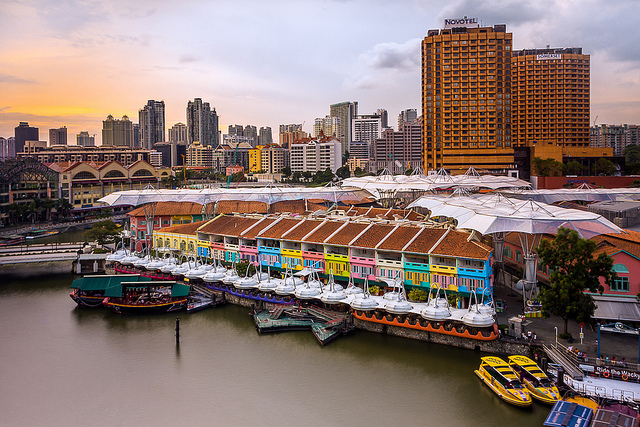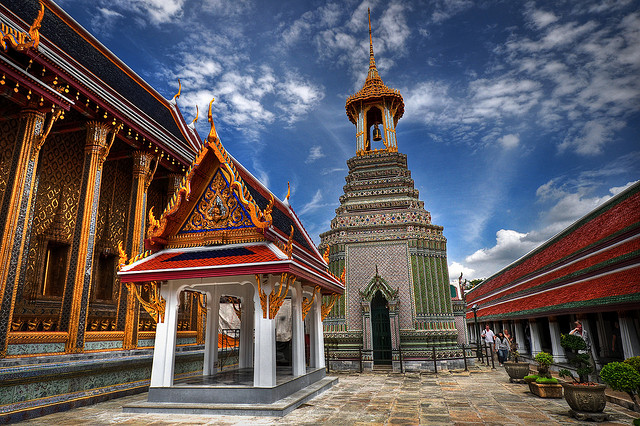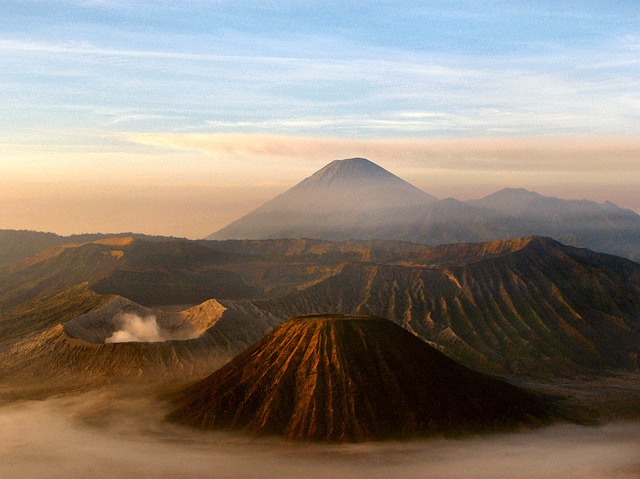Vietnam is a country rich with natural beauty and resources, and its people know how to use it. Despite its long history of war and colonization, its people have fought back and risen to rebuild their country.
Of all the colonizers, China and France has had a lasting impression on the Vietnamese culture. Traces of these can be seen in many of the country’s architecture and cuisine. With its low cost of living and numerous places to explore, Vietnam is one of Southeast Asia’s favorite destination for travelers from all walks of life.
When to go
While most Southeast Asian countries have consistent weather seasons of dry and rainy throughout the year, Vietnam’s three regions experience distinct differences in its climate. Those in the North experience four seasons, with cold climates that drop down to 15°C during the winter months of November to March. April brings in the summer season, with some scattered rain showers. The warmest months occur during May to October, and expect it to be highly humid.
The South region experiences the typical tropical climate associated with most Southeast Asian nations with two main seasons of rainy and dry. The dry season from February to April is expectedly hot, and starts to cool as the monsoon months of May to November come in. Expect the rains to fall consistently during these months, so bring along an umbrella and lightweight rain gear. December to March brings about cooler weather, and would be the best time to visit the region.
Central Vietnam offers an interesting balance between the other regions, with its coastal lowlands and central highlands. The coastal areas is considerably warmer compared to the other areas during summer, but are wet and cold during the monsoon season. The highlands also experience a higher amount of rainfall compared to the other areas of the country.
Visa
Most visitors arriving in Vietnam will need a visa to the country. Most Vietnamese visas can be acquired through the Vietnamese embassy or consulate of your country if you have one. These visas are commonly valid for single entry only, so if your travel plans include leaving and re-entering Vietnam from another country, make sure your visa allows multiple entries.
There is such a thing called “visa on arrival”, wherein a tourist will be given a Vietnamese visa upon arriving in the country. However, a letter of approval has to be secured prior to this, so make sure you have all your documents ready before you go. When in doubt, contact your local Vietnamese embassy or consulate.
Citizens of the following countries do not require a visa when visiting Vietnam: Denmark, Finland, Japan, Norway, South Korea, Sweden, Russia (15 day stay); Philippines (21 days); Indonesia, Laos, Malaysia, Singapore, Thailand (30 days).
Where to Go
Vietnam has three major international airports in Ho Chi Minh City, Hanoi and Da Nang. Visitors who come through any of these airports will have many places to visit without having to go far.
– Hanoi
Hanoi is a wonderful mix of the old and the new. Located on the Northern region of Vietnam, it’s a city found between rivers and features many scenic spots. The most well known of these lakes is Hoan Kiem or the Sword Lake and one of Hanoi’s cultural centers. Hanoi’s original facade can be seen when visiting the Old Quarter and walking along its streets, many of which are named after the specialization of the merchants who used to do business there. Nowadays the structures house restaurants and other businesses. Hanoi is also home to several museums, particularly the National Museum of Vietnamese History, Vietnam National Museum of Fine Arts and the Hanoi Hilton (formerly Hoa Lo Prison).

In Hanoi you can also see the strong influence of French colonial architecture. The tree-lined Phan Dinh Phung street, buildings like the Grand Opera House, Presidential Palace and the Saint Joseph Cathedral all show French sensibilities with a healthy dash of Vietnamese elements thrown in.
Travelers will not lack for entertainment options in Hanoi. Go see the Thăng Long Water Puppet Theater for some unique water puppetry. Or take your pick of the many theaters and cinemas around the area as well as the wide choices for shopping amenities.
– Ho Chi Minh City
Ho Chi Minh City is Vietnam’s largest city and located in the Southern region of the country. Formerly known as Saigon, it was renamed Ho Chi Minh in 1976 when Saigon merged with the Gia Định Province. It has many historical sites open to visitors, including the Reunification Palace (check out the 5th floor which is said to look just like it did back in 1975), the War Remnants Museum, and the City Hall (now called People’s Committee Hall). The Museum of Vietnamese History houses a collection of Vietnamese antiques, and the botanical garden outside makes for a nice reprieve from the heat and crowds.
While the country predominantly follows the Buddhist faith, Ho Chi Minh City has several religious sites. Numerous temples and pagodas dot the city. The Central Mosque was intended for Saigon residents from southern India, but has received Muslim visitors from all over the Southeast Asian region. The French-Catholic influence also left its mark with the Notre Dame Cathedral, which looks like the church in France that bears the same name.
– Da Nang
Da Nang is located in the Central region, and its airport is closest to Hoi An and the imperial capital Hue. For a bit of cultural experience, the Cham Museum features sandstone sculptures made by the Cham civilization. They were Hindu practitioners, so many of their creations feature the gods and goddesses of that faith, particularly that of Shiva. Visit nearby Mỹ Sơn after looking at the museum.
– Hoi An
Hoi An is a city south of Da Nang. Old Town, listed as a UNESCO World Heritage Site, merits a trip as it has plenty of historical sites you can visit including several museums, old houses and historical landmarks.
You may also want to try a Hoi An Eco Tour which gives you a glimpse into the town’s living historical and cultural heritage. To access parts Hoi An that you may miss in large tour groups, sign up for a Heaven and Earth Bicycle tour to explore local spots and hole-in-the-wall places.
Culture
Despite having a history of foreign occupation, Vietnam has held strongly to its roots. Majority of the people in the country are ethnic Vietnamese, with a strong Chinese community in Ho Chi Minh City. Numerous ethnic groups are scattered all over the country.
Mahayana Buddhism is the dominant religion, followed by the Cao Dai religion and Catholicism.
Officially, the language is Vietnamese, with many loan words from Chinese, French and English. In the old days, French was the approved secondary language and spoken by an older generation of educated Vietnamese, but is slowly being taken over by English. However, many younger folk are experiencing a revival of interest in French.
Gustatory Delights
Food is a big part of the Vietnamese culture. Expect a full feast every holiday or special occasions. Each region boasts of their own speciality, and it would do you good to sample as much as you can while you’re in the country. Many of the restaurants serve dishes that combine the best of various Asian cuisines. For the authentic Vietnamese fare, try one of the street-side eateries and take your pick from the regional specialties they offer.
Phở is the country’s most known dish, a broth with rice noodles and some meat (either chicken or beef). It is served plain, with plates of fresh herbs and condiments you can mix to your soup depending on your taste.
Costs and Bargaining
Many guides caution tourists on the widespread Vietnamese practice of overcharging. It is considered socially acceptable for tourists to be charged for services at a higher rate, on the basis that the country has quite a low cost of living. However, this practice has become less common since the early 1990s, and many offer a standard cost rate for goods and services. Before embarking on any trade, be clear on an agreed price and stick to it no matter what.
Vietnam is a country with close ties to its history, culture and traditions, but as the world changes, it adapts to embrace the modern lifestyle with it. Visitors will appreciate the old-world charm that seemingly transports them back to a different place and time.



